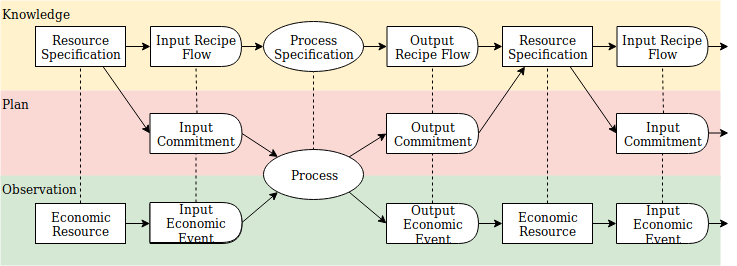-
Notifications
You must be signed in to change notification settings - Fork 1
New issue
Have a question about this project? Sign up for a free GitHub account to open an issue and contact its maintainers and the community.
By clicking “Sign up for GitHub”, you agree to our terms of service and privacy statement. We’ll occasionally send you account related emails.
Already on GitHub? Sign in to your account
OSH Ontology #6
Comments
|
(Also copied over from issue #11, author: @hoijui) In my mind, it would be nice if we could make this ontology such that it can be used (and potentially extend to) anything we come around in the OSH universe, not just what OKH needs right now in its current form. This way it can form a common basis for a lot of technology to come, but also for people to talk to each other about the subject. Maybe the goal could be, to limit the ontology such, that it fits into a legible diagram (including icons for things) on a single page? |
|
(Also copied over from issue #11, author: @moedn) Moin! Some unasked comments from my side:
regarding your questions:
|
|
(Also copied over from issue #11, author: @hoijui) ehhh wow, thank you @moedn!! :-)
|
Let's develop an Ontology for OSH designs, manufacturing and maybe more (e.g. recycling).
To define the scope more specifically/to limit it more, we can discuss in here.
Current suggestion:
Scope of the Ontology
To allow different actors in the OSH universe to interact using similar wording.
Such actors includes:
From here on, the content was copied over from #11, as this ontology would form the base for solving that issue.
I am brainstorming about this since a few days, and also asked Michele Langhammer and Mark Neugebauer from the FCHH network, whether they may know an ontology dealing with such stuff from industry (or elsewhere).
If not, I will start writing down some ideas and questions, and maybe work on a diagram.
My current mental model, consists of two parallel levels/spheres: virtual and physical. I think of it a bit like the main "levels"(?) in ValueFlows, there: Knowledge, Plan and Observation (so 3 levels in VF, 2 in our case):

These spheres are different, but for the most part - or at least roughly - an object in one sphere has an equivalent object in the other sphere.
Some questions (mostly for myself and maybe discussions; numbered just to make them referenceable):
hardware?)(that might include hard, soft and liquid things, but not most gases)
-> can/should we make sure this makes sense within our ontology, as it is commonly understood? .. or better not?
The text was updated successfully, but these errors were encountered: